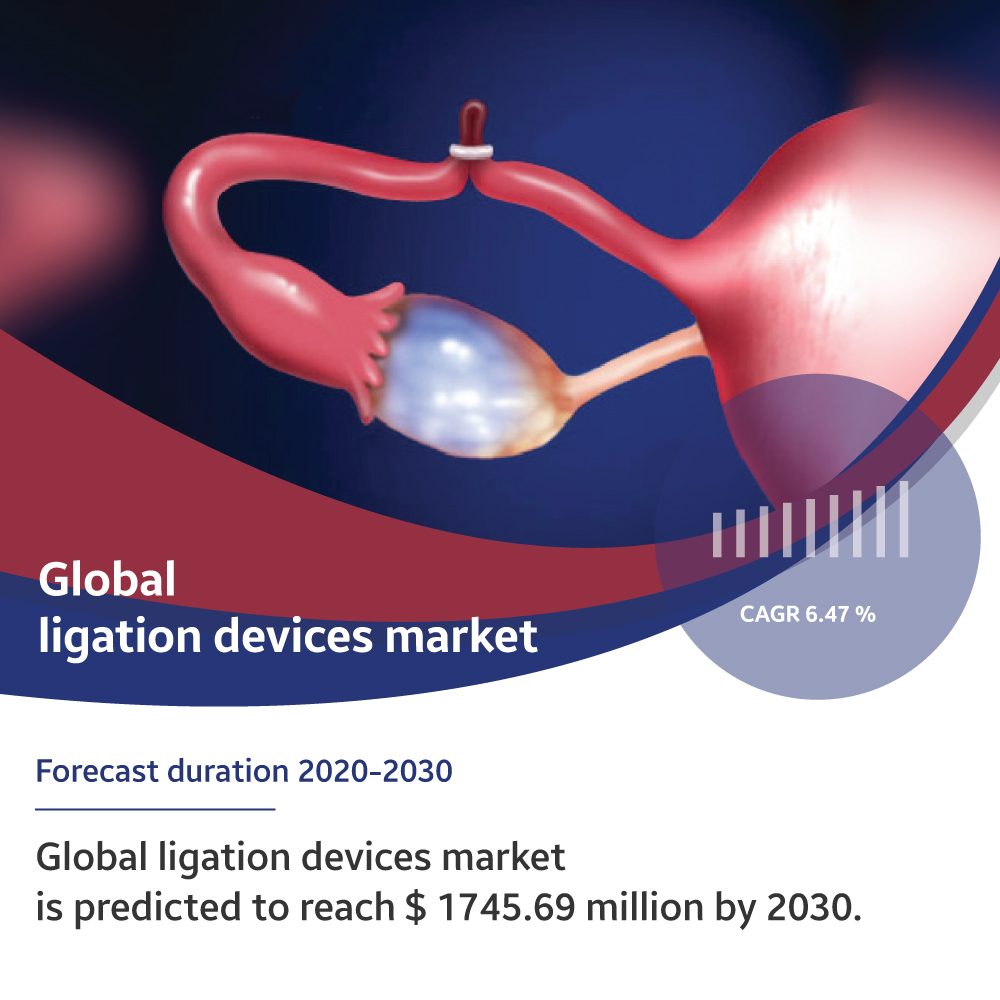During surgery or other medical procedures, a blood vessel or duct is tied with a ligation device to stop bleeding. Ligation devices are designed to give patients the greatest possible surgical experiences. These gadgets might be employed, depending on the technique. Numerous medical specialties, such as gynecology, urology, cardiology, and abdominal surgery, employ ligature devices. Ligature attachments may be necessary during laparoscopic and open surgical procedures.
The market for ligation devices in 2021 was USD 992.94 million and will reach USD 1745.69 million by 2030 at a 6.47% CAGR during 2021-2030.
Due to the increased prevalence of conditions, including protuberant gastrointestinal lesions, gastric varices, and angiodysplasia, the market will grow over the projected year. The need for minimally invasive procedures utilizing ligation devices and accessories will rise significantly.
Market Dynamics
Drivers
- The market is expanding as surgical operations, and less invasive techniques are used more frequently. The market is also driven by the rise in gynecological, urological, cardiac, and gastrointestinal surgical procedures that call for ligation devices for diagnostic and therapeutic processes.
- According to European Heart Network, in 2017, 3.9 million deaths in Europe were caused by cardiovascular illnesses. The need for ligation devices grows along with the number of disorders requiring minimally invasive procedures.
- Adiana tubal ligation, essure tubal ligation, bilateral tubal ligation, intrauterine devices, contraceptive implants, postpartum tubal ligation, interval tubal ligation, bipolar coagulation, monopolar coagulation, tubal clipping, tubal ringing, uchida tubal ligation, and adiana tubal ligation are just a few of the cutting-edge devices, methods, and treatment procedures fostering market growth.
Restraints
- The cost of ligation devices used in surgical procedures requires a larger investment, which restricts the expansion of the ligation devices market.
- The increase in pelvic inflammatory disease and scars from tubal ligations is constraining the market.
Opportunities
The market will develop in the next years due to rising healthcare spending, which may be utilized to treat numerous cardiovascular diseases and other conditions. Additionally, a rise in the demand for minimally invasive procedures that use ligation devices and related accessories will probably offer a market expansion opportunity in the future.
Market Segmentation
- In 2020, the accessories segment held the majority of the market with 55% of the revenue share on the basis of product. It will grow at a robust 6.9% CAGR during the projection period. This trend can be attributed to an increase in surgical operations, particularly in developing countries. Additionally, this market segment is anticipated to grow due to its accessibility in a variety of sizes and extensive use in surgical procedures.
- On the basis of procedure, the open surgery segment maintained the largest market position in the year 2020 as a result of the increase in heart disease cases and open-heart surgeries. The industry is also heavily influenced by several open-heart surgical procedures, including Coronary Artery Bypass Graft (CABG), aortic valve replacement, and mitral valve replacement needing ligation devices.
- In 2020, the gastrointestinal and abdominal surgeries segment held the maximum market position and will grow at a 6.9% CAGR on the basis of application. This is due to the increased cases of cardiovascular disorders. In addition, as cardiovascular robotic surgery technology develops, the market for ligation devices will grow.
- The hospital segment ruled the entire market in 2020, with 75% of the revenue share on the basis of the end user. The main factors driving this market category are an increase in operations, an expansion in health spending, and an increase in hospitals.
Regional Analysis
Due to rising healthcare costs and the prevalence of chronic illnesses, North America held the overall market in 2020. The Centers for Disease Control and Prevention reports that coronary heart disease (CHD) caused 370,000 deaths in 2018 and was the most common form of cardiac disease in the United States in 2018. The market expansion is also being fueled by strong competition and increasing government investment. Spending on healthcare for gastrointestinal issues totaled USD 135 billion in 2015, significantly more than other prevalent illnesses. Thirty million Americans had chronic kidney disease in 2017, according to the National Center for Chronic Disease Prevention and Health Promotion.
Asia Pacific will grow at a robust CAGR. The vast patient population and the quick development of infrastructure in the APAC region are the main drivers of the region’s growth. Around 15,000 surgical treatments were carried out in Australia in 2015, according to Monash University, increasing the burden of bariatric surgery.
Key Players
- Olympus Corporation
- Applied Medical
- Ethicon (Johnson & Johnson)
- ConMed Corporation
- B. Braun Melsungen AG
- Green Think Medical
- Cooper Surgical
- Medtronic
- Teleflex Incorporated
The market for ligation devices in 2021 was USD 992.94 million and will reach USD 1745.69 million by 2030 at a 6.47% CAGR during 2021-2030. The prevalence of diseases such as angiodysplasia, gastric varices, and gastrointestinal protuberant lesions will foster the growth of the ligation devices market.
